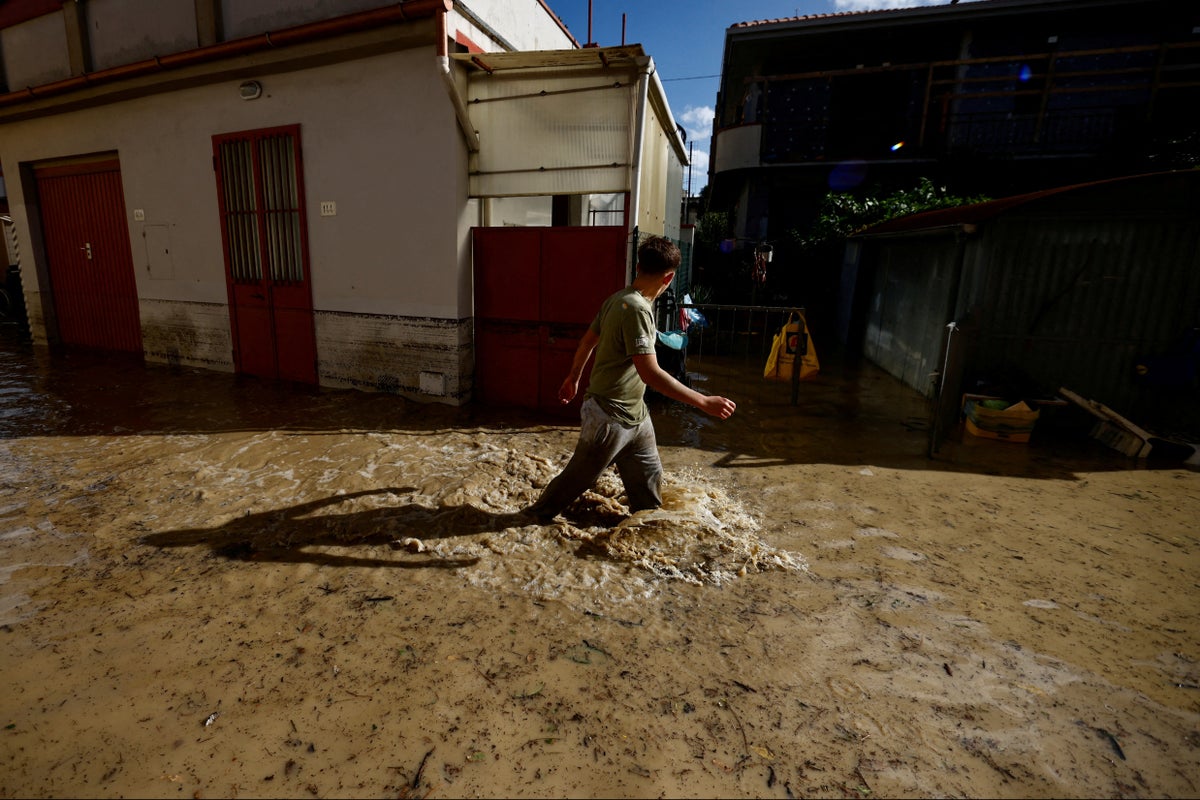
Record-breaking rain produced floods in Italy’s Tuscan region as Storm Ciaran pushed into the country, trapping residents in their homes, inundating hospitals and overturning cars.
At least five people were killed, bringing the storm’s death toll in western Europe to 12 on Friday.
Italian Civil Protection authorities said 200 millimetres of rain fell in three hours, from the coastal city of Livorno to the inland valley of Mugello, and caused riverbanks to overflow. A video shows at least a dozen cars getting pushed down a flooded road.
Tuscany governor Eugenio Giani said five people died in the storm. “There was a wave of water bombs without precedence,” Mr Giani told Italian news channel Sky TG24. Rainfall hasn’t been seen in this amount in the last 100 years.
The Italian government declared a state of emergency and allocated an initial €5m (£4.3m) to help the worst-hit areas.
Around 48,000 people in the region had no electricity, deputy prime minister Matteo Salvini told a news conference.
Climate scientists say human-induced climate change has led to heavier rainfall during storms like Ciaran, often resulting in more severe damage.
“If the conditions are different than 20 years ago, it is obvious to everyone,” Nello Musumeci, the government’s minister for civil protection said, noting that weather systems in Italy have become more tropical.
Casualties in Tuscany included an 85-year-old man found on the flooded ground floor of his home near the city of Prato, north of Florence, and an 84-woman who died while trying to push water out of her home in the same area, according to Italian news agency ANSA.
The other victims were a couple who had been missing near the town of Vinci and a person in Livorno province.
At least one person was missing Friday in Tuscany, along with an off-duty firefighter reported missing in the mountains of Veneto, north of Venice. Other regions were on high alert and authorities warned that the storm was heading toward southern Italy.
Ciaran left at least seven people dead as it swept across Spain, France, Belgium, the Netherlands and Germany on Thursday. The storm devastated homes, caused travel mayhem and cut power to a vast number of people.
As the storm pushed through, it flooded at least four hospitals, including in Pisa and Mugello. Throughout Tuscany, train lines and highways were disrupted and schools were closed. Hundreds of people were unable to get home, including around 150 stranded in Prato after a train line was suspended Thursday night. Some 40,000 people were without electricity on Friday.
The mayor of Prato expressed shock at the force of the flood that devastated the city overnight. By early Friday, residents were working to clear the damage.
“A blow to the stomach, a pain that brings tears. But even after an evening and night of devastation, we are pulling up our sleeves to clean and bring our city back to normality,” mayor Matteo Biffoni posted on social media.
Florence mayor Dario Nardella told Sky TG24 that the Arno River, which runs through the centre of the city, had reached the first level of alert, with the highest levels forecast for midday. Neither he nor the governor expected the river to overrun its banks.
“The psychological fear is high, considering that tomorrow is the anniversary of the 1966 flood,” Mr Nardella said, recalling a flood that killed 101 people and damaged or destroyed millions of artistic masterpieces and rare books.
In Austria's southern Carinthia province, which borders Italy and Slovenia, wind and heavy rain on Thursday night led to landslides, blocked roads and power cuts. About 1,600 households were without electricity early Friday, the Austria Press Agency reported.
The storm receded in northern France and the Atlantic coast on Friday, but heavy rains continued in some regions as emergency workers cleared away debris from the day before. Meanwhile. Corsica in the Mediterranean faced unusually fierce winds Friday – up to 87mph (140kph) – and regions in the Pyrenees in the southwest were under flood warnings.
More than half a million French households remained without electricity for a second day, mainly in the western region of Brittany. Trains were halted in several areas and many roads remained closed.
On Friday French president Emmanuel Macron travelled to storm-ravaged areas of Brittany, while prime minister Elisabeth Borne went to hard-hit areas of Normandy.
Associated Press







